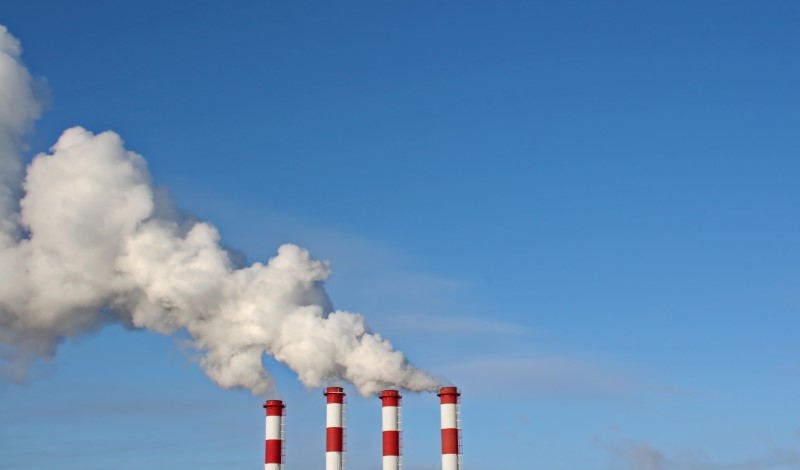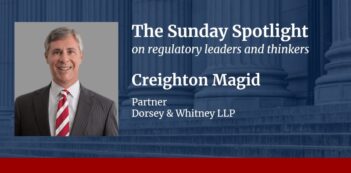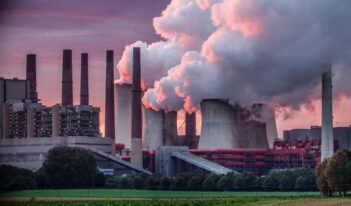
Scholars analyze decreasing environmental prosecutions and propose enforcement improvements.
When he ran for President in 2016, then-candidate Donald Trump publicly declared his distaste for existing environmental enforcement by vowing to dismantle much of the U.S. Environmental Protection Agency (EPA), leaving only “little tidbits” intact. In a recent article, two professors confirm that EPA criminal investigations did decrease significantly over the course of Trump’s presidency.
Joshua Ozymy and Melissa Jarrell Ozymy, professors at the University of Tennessee at Chattanooga, worry that the Trump Administration’s reduction in criminal enforcement has left the public vulnerable to environmental harms. They discuss how the Biden Administration can deter and police polluters effectively by reinvigorating the prosecution and investigation of environmental crimes.
Three concrete steps can reinvigorate environmental criminal enforcement and address environmental justice, contend Ozymy and Ozymy: infusing agencies responsible for environmental law enforcement with resources, engaging and collaborating with environmental justice communities, and identifying these communities as crime victims in federal court.
Ozymy and Ozymy note that a “golden era” of federal environmental law enforcement has never existed. With the development of a criminal enforcement apparatus evolving incrementally through the last two decades of the 20th century, they hold that enforcement was “running on fumes” by the time President Obama took office. Ozymy and Ozymy identify the main culprits of dwindling enforcement prior to the Trump Administration as hostile political opposition and miserly financial support paired with increased responsibilities.
Despite being founded by Richard Nixon on December 4, 1970, EPA did not have an official Office of Enforcement until 1981, with full-time criminal investigators hired the following year. In 1990, the Pollution Prosecution Act was passed, which outlined statutory minimums for EPA criminal investigators moving forward, with 200 required by 1995.
Today, Ozymy and Ozymy estimate that the number of criminal investigators at about 145. These investigators reside within the Criminal Investigation Division of EPA (EPA-CID), and typically work out of EPA field offices around the country. EPA-CID agents obtain information from formal documents, whistleblowers, civil inspectors, and other governmental agencies to compile cases.
Criminal investigators then bring cases to prosecutors within the Justice Department’s Environmental Crimes Section (DOJ-ECS) or the U.S. Attorney’s Office to file criminal charges or convene a grand jury. DOJ-ECS was formed in 1982 and runs parallel to the Justice Department’s Environmental Enforcement Division—which exclusively prosecutes civil environmental cases.
Ozymy and Ozymy highlight the fact that the minimum number of EPA criminal investigators has lapsed significantly since the George W. Bush Administration, even with the statutory minimum ignored historically. Due to the lack of investigators, a bottleneck effect occurs because EPA-CID agents are the individuals responsible for building cases for the Justice Department to pursue. Without enough investigators, creating a general deterrent effect becomes “a near impossibility”, suggest Ozymy and Ozymy.
Ozymy and Ozymy underscore the necessity of dedicating more investigators as crucial to preventing companies from polluting fenceline communities. In addition, they propose that the Justice Department shore up the dearth of specialized investigators in EPA-CID by hiring DOJ-ECS-specific investigators and hiring more prosecutors to handle the subsequent increase in cases. They argue that these strategic investments by the Biden Administration would offset the historical precedent of neglecting environmental policing efforts.
Civil enforcement and remedies, which make up the bulk of environmental enforcement in the United States, focus on bringing violators into compliance with the law, maintain Ozymy and Ozymy. They cite research pointing to the conclusion that criminal sanctions are reserved for crimes with one or more aggregating factors, such as “chronic offenses, deceptive or misleading conduct, or operation outside the boundaries of the regulatory system.”
To analyze the criminal enforcement actions arising from EPA investigations, Ozymy and Ozymy collected data from EPA’s Summary of Criminal Prosecutions Database. Spanning the period of 1983 to the present, Ozymy and Ozymy selected all cases adjudicated during the Trump Administration—January 20, 2017 to January 20, 2021. Of 282 total prosecutions, they flagged 69 as being primarily air pollution crimes.
The authors discovered that 22 cases were adjudicated in 2017, with subsequent years yielding steady declines: 18 cases in 2018, 14 cases in 2019, and 12 cases in 2020. The number of defendants also dropped considerably, from 41 in 2017 to 19 by 2021. In 59 percent of cases, prosecutors charged at least one defendant with at least one non-environmental crime, showing a commitment to prosecute cases with aggregating factors that indicate serious violations of law.
Ozymy and Ozymy argue that with falling numbers in prosecutions, the window of opportunity for environmental crimes to fester and harm fenceline communities widens. Although the Biden Administration has voiced strong support for addressing environmental injustice and a commitment to expand enforcement agency budgets, Ozymy and Ozymy contend that infusing EPA-CID and DOJ-ECS with funding and personnel must be accompanied by parallel efforts to engage and collaborate with the communities the agencies serve.
One example involves integrating the affected communities directly into policing efforts. Ozymy and Ozymy cite their own personal experience in working with local communities as critical in successfully prosecuting and convicting the defendant corporation.
Recognizing affected communities and individuals as crime victims under the Crime Victims’ Rights Act is a final step that could address environmental injustice through enforcement. Ozymy and Ozymy find that only a handful of cases have cited this legislation to benefit either group. By using this technical designation, the harms that environmental crime victims suffered can be vindicated in federal court.
Ozymy and Ozymy laud the efforts of career administrators, investigators, and prosecutors in persevering despite historic fluctuations between “a lack of promised support and sometimes open hostility.” To achieve justice for fenceline communities and enable criminal enforcement to flourish, they conclude that three steps must be taken: allocating more resources for investigation and prosecution, collaborating with affected communities, and officially recognizing victims’ rights. Taken together, these reforms could usher in an unprecedented golden era of environmental law enforcement.



